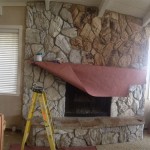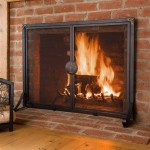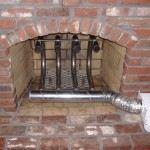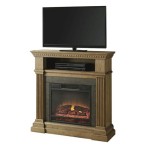Best Tile Adhesive For Fireplace Applications
Selecting the appropriate tile adhesive for a fireplace project is crucial for ensuring the longevity, safety, and aesthetic appeal of the installation. The unique conditions surrounding a fireplace, including high temperatures, fluctuating humidity levels, and potential exposure to soot and ash, necessitate the use of a specialized adhesive capable of withstanding these challenges. Standard tile adhesives designed for general flooring or wall applications may not possess the necessary thermal resistance or bond strength required for fireplace installations, leading to premature failure, tile detachment, and potentially hazardous situations.
Therefore, understanding the different types of tile adhesives available and their respective properties is paramount. This article will explore the factors to consider when choosing a tile adhesive for fireplace applications, and discuss some of the best options available based on their performance characteristics and suitability for various fireplace designs and tile materials. Furthermore, it will address critical aspects of surface preparation and application techniques to ensure optimal adhesion and a lasting, secure bond.
Understanding the Demands of Fireplace Environments
Fireplaces are subject to considerably higher temperatures than typical interior environments. The surface of the fireplace surround, particularly areas directly exposed to the firebox, can experience significant temperature fluctuations and reach considerably high temperatures during operation. This thermal cycling can cause expansion and contraction of both the tile and the underlying substrate, placing considerable stress on the adhesive bond. A standard tile adhesive lacking adequate thermal resistance may become brittle and lose its bonding capabilities, leading to cracking, delamination, and eventual tile displacement.
Furthermore, fireplaces are often exposed to moisture, either from external sources or condensation due to temperature differences. This moisture can penetrate through grout lines and potentially weaken the adhesive bond over time. The presence of soot and ash, byproducts of combustion, can also contribute to the degradation of the adhesive and affect its ability to maintain a strong bond. These corrosive substances can seep into the adhesive matrix, compromising its structural integrity and potentially causing discoloration or staining.
Therefore, the ideal tile adhesive for fireplace applications must possess exceptional thermal resistance, moisture resistance, and chemical resistance properties to withstand these harsh conditions and ensure a long-lasting, secure installation. The adhesive should also exhibit sufficient flexibility to accommodate the expansion and contraction of the tiles and substrate without cracking or losing its bond strength. It should also be resistant to the corrosive effects of soot and ash, maintaining its structural integrity and aesthetic appearance over time.
Key Considerations When Selecting a Tile Adhesive
Several key factors must be taken into consideration when selecting a tile adhesive for a fireplace project. These factors directly impact the adhesive's ability to perform effectively and provide a durable, long-lasting bond in the demanding fireplace environment.
Thermal Resistance: This is arguably the most crucial factor. The adhesive must be able to withstand the high temperatures generated by the fireplace without degrading or losing its bonding properties. Look for adhesives specifically designed for high-temperature applications, with a proven track record of performance in fireplace or similar environments. Consult the manufacturer's specifications for maximum operating temperature and thermal cycling resistance. High-temperature epoxies and modified thin-set mortars are often suitable choices.
Bond Strength: The adhesive must possess sufficient bond strength to securely hold the tile in place, even under stress from thermal expansion and contraction. A stronger bond ensures that the tiles will remain firmly adhered to the substrate, preventing displacement and potential hazards. Modified thin-set mortars, especially those formulated with polymers, typically exhibit superior bond strength compared to standard thin-set mortars.
Flexibility: A flexible adhesive can accommodate the movement caused by thermal expansion and contraction without cracking or losing its bond. This flexibility is particularly important for larger tiles or installations where significant temperature fluctuations are expected. Modified thin-set mortars with polymer additives generally offer improved flexibility compared to unmodified mortars.
Moisture Resistance: The adhesive should be resistant to moisture penetration to prevent weakening of the bond over time. Consider using a waterproof or water-resistant adhesive, especially in areas prone to moisture exposure. Epoxy adhesives are inherently waterproof and offer excellent protection against moisture damage.
Chemical Resistance: As mentioned, the adhesive should be resistant to the corrosive effects of soot, ash, and other combustion byproducts. Choose an adhesive with good chemical resistance to maintain its structural integrity and aesthetic appearance over time. Epoxy adhesives typically offer superior chemical resistance compared to cement-based mortars.
Tile Type: The type of tile being used will also influence the choice of adhesive. Different tile materials have varying porosities and expansion coefficients, requiring adhesives with compatible properties. For example, natural stone tiles may require a different adhesive than ceramic or porcelain tiles. Consult the tile manufacturer's recommendations for suitable adhesives.
Substrate Material: The type of substrate to which the tile will be adhered is another important consideration. Different substrates, such as concrete, brick, or cement board, have varying surface properties and require adhesives with appropriate adhesion characteristics. Ensure that the adhesive is compatible with the chosen substrate and that the substrate is properly prepared before application.
Recommended Tile Adhesives for Fireplace Applications
Based on the factors discussed above, several types of tile adhesives are commonly recommended for fireplace applications. Each type offers unique advantages and disadvantages, making it important to carefully consider the specific requirements of the project when making a selection.
Modified Thin-Set Mortar: Modified thin-set mortars are cement-based adhesives that have been enhanced with polymer additives to improve their bond strength, flexibility, and water resistance. These mortars are a popular choice for fireplace applications due to their versatility, ease of use, and relatively low cost. They are suitable for a wide range of tile materials and substrates, and can provide a strong, durable bond that can withstand the thermal stresses of a fireplace environment.
The polymer additives in modified thin-set mortars enhance their adhesion properties, allowing them to bond more effectively to various surfaces. They also improve the mortar's flexibility, allowing it to accommodate movement caused by thermal expansion and contraction. Furthermore, the polymers enhance the mortar's water resistance, reducing the risk of moisture penetration and bond degradation.
When selecting a modified thin-set mortar for a fireplace application, look for products that are specifically labeled as being suitable for high-temperature environments. These mortars will typically have a higher polymer content and be formulated with additives that enhance their thermal resistance and bond strength. Follow the manufacturer's instructions carefully when mixing and applying the mortar to ensure optimal performance.
Epoxy Adhesive: Epoxy adhesives are two-part systems that consist of a resin and a hardener. When mixed together, these components react chemically to form a strong, durable, and waterproof bond. Epoxy adhesives are known for their exceptional bond strength, chemical resistance, and thermal resistance, making them an excellent choice for demanding fireplace applications.
Epoxy adhesives offer superior resistance to high temperatures, moisture, and chemicals compared to cement-based mortars. They are also highly resistant to cracking and delamination, ensuring a long-lasting, secure bond even under extreme conditions. However, epoxy adhesives can be more difficult to work with than modified thin-set mortars. They have a shorter working time and require precise mixing to ensure proper curing.
Epoxy adhesives are typically more expensive than modified thin-set mortars, but their superior performance and durability can justify the higher cost in certain applications. When selecting an epoxy adhesive for a fireplace project, choose a product that is specifically designed for tile installation and follow the manufacturer's instructions carefully. Ensure that the surface is properly prepared before applying the adhesive to achieve optimal adhesion.
High-Temperature Construction Adhesive: Some specialized construction adhesives are formulated specifically for high-temperature applications, such as fireplaces and wood stoves. These adhesives typically have a high bond strength and excellent thermal resistance, making them suitable for bonding tiles and other materials to fireplace surrounds. They are often available in cartridges for easy application with a caulking gun.
These adhesives are often easier to apply than epoxy adhesives and may offer a cost-effective alternative for smaller fireplace projects. However, it is important to carefully review the manufacturer's specifications to ensure that the adhesive is suitable for the specific tile material and substrate being used. It is also crucial to follow the manufacturer's instructions for surface preparation and application to achieve optimal adhesion.
Surface Preparation and Application Techniques
Proper surface preparation is essential for ensuring optimal adhesion and a long-lasting bond. The substrate to which the tile will be adhered must be clean, dry, and free of any loose debris, grease, or other contaminants. Remove any existing paint, wallpaper, or loose mortar. If the substrate is porous, consider applying a primer to improve adhesion and prevent moisture absorption.
When applying the tile adhesive, use the appropriate trowel size and angle to ensure proper coverage and create a uniform bed of adhesive. Follow the manufacturer's instructions for mixing the adhesive and allow it to cure fully before grouting. Use a high-quality grout that is specifically designed for fireplace applications to provide a durable, water-resistant seal.
For modified thin-set mortars, it is crucial to mix the mortar according to the manufacturer's instructions, using the correct amount of water. Avoid adding too much water, as this can weaken the mortar and reduce its bond strength. Use a notched trowel to apply the mortar to the substrate, ensuring that the notches are oriented in the same direction. Press the tiles firmly into the mortar bed, using a twisting motion to ensure good contact.
For epoxy adhesives, it is essential to mix the resin and hardener in the correct proportions, following the manufacturer's instructions. Mix the components thoroughly until a uniform color and consistency are achieved. Apply the epoxy adhesive to the substrate using a notched trowel, ensuring that the notches are oriented in the same direction. Press the tiles firmly into the epoxy adhesive, using a twisting motion to ensure good contact. Remove any excess epoxy adhesive from the tile surfaces before it cures.
:fill(white)/www.toppstiles.co.uk/static/uploads/2020/07/Fireplace-tiling-Batik.jpg?strip=all)
Tips For Decorating Your Fireplace Topps Tiles

Diy Fireplace Makeover With Vinyl Tiles Sew Much Ado

Heat Resistant Tile Adhesive 300ml Great For Fireplace Repairs 1000c 1830f

Easy Stick On Tiles Update Your Fireplace Porch Daydreamer
/102661017-6a23c040b71843379188b96b21ac1a08.jpg?strip=all)
How To Tile A Fireplace

How To Tile A Fireplace Even If It S Brick The Handyman Daughter

How To Tile Over A Marble Fireplace Surround Porch Daydreamer

Er Friendly Fireplace Makeover With L Stick Tiles The Homes I Have Made

How To Tile A Fireplace My Uncommon Slice Of Suburbia

Restyle It Wallpapered Fireplace Surround A Kailo Chic Life
Related Posts








